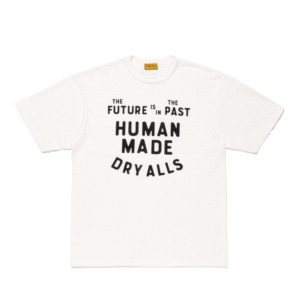The remarkable journey of black leather jackets through fashion history represents one of the most compelling narratives in modern clothing evolution. These iconic garments have transcended their practical origins to become powerful symbols of rebellion, sophistication, and personal expression. The transformation from functional outerwear to cultural artifact reveals much about social change, technological advancement, and the human desire for clothing that communicates identity. Across decades of shifting trends and cultural movements, black leather jackets have maintained their relevance by adapting to new contexts while preserving their essential character and symbolic power.
Historical Foundations and Functional Beginnings
The story of black leather jackets begins in the early days of aviation when pilots required protective clothing for open-cockpit flying. During World War I, military aviators needed garments that could withstand harsh conditions at high altitudes, leading to the development of the first functional leather flight jackets. These early designs prioritized protection over style, featuring durable construction, wind-resistant fronts, and snug closures. The choice of leather provided essential insulation against cold temperatures while offering protection from the elements. The dark coloration served practical purposes of camouflage and maintenance, establishing the foundational elements that would define leather jackets for decades to come.
The interwar period saw significant refinement in black leather jackets as technology advanced and manufacturing processes improved. World War II marked a crucial evolution in design and materials, with various military branches developing specialized jackets for their personnel. The A-2 flight jacket became standard issue for U.S. Army Air Forces crews, while the G-1 served naval aviators. These jackets featured improved insulation, more practical pocket configurations, and durable zipper closures. During this era, leather jackets transitioned from purely functional equipment to symbols of bravery and adventure, with many pilots customizing their jackets with squadron insignia and mission markings that transformed standard issue gear into personal artifacts.
Cultural Transformation and Symbolic Meaning
The post-war period witnessed the remarkable cultural transformation of black leather jackets from military wear to symbols of rebellion and nonconformity. Returning servicemen brought their issued jackets into civilian life, where they were adopted by various groups seeking clothing that represented toughness and independence. Motorcycle enthusiasts recognized their protective qualities, while Hollywood discovered their visual power in creating compelling on-screen characters. This period marked the beginning of the jacket’s dual identity—as both practical protective wear and powerful cultural signifier—setting the stage for its enduring place in popular culture.
The 1950s solidified the rebellious image of black leather jackets through their association with youth subcultures and countercultural movements. Iconic film performances featured actors wearing leather jackets as symbols of cool defiance, cementing their reputation as garments of nonconformity. Music subcultures, particularly rock and roll and later punk movements, embraced them as uniforms of rebellion, often customizing jackets with band patches, political statements, and DIY modifications. This era demonstrated the jacket’s ability to convey multiple meanings—it could represent anti-establishment values in one context and sophisticated style in another, showcasing its remarkable cultural flexibility.
Design Evolution and Material Innovation
The category of black leather jackets encompasses numerous distinctive styles, each with its own history and aesthetic characteristics. The motorcycle jacket remains the most recognizable variant, characterized by its asymmetrical zipper, wide lapels, and hardware details that originally served protective functions. Bomber jackets offer a more relaxed silhouette with ribbed cuffs and hem, transitioning from military wear to casual fashion. Modern designs continue to experiment with cuts, hardware, and detailing while maintaining the essential elements that define leather jackets.
The quality and character of black leather jackets depend significantly on material choices and construction techniques. Different leather types offer distinct wearing experiences and aging patterns. Full-grain leather develops a unique patina over time, recording the wearer’s history through subtle changes in texture and color. Lambskin provides exceptional softness and drape, while cowhide offers durability and structure. The jacket’s lining, zipper quality, stitching details, and hardware all contribute to its overall character and longevity, making each jacket a unique combination of material and craftsmanship.
Cultural Impact and Subcultural Adoption
The cultural significance of black leather jackets has continuously evolved while maintaining its core association with individuality and self-expression. Various subcultures have adopted and adapted leather jackets to serve as visual identifiers and symbols of belonging. Music scenes from rockabilly to heavy metal have incorporated leather jackets into their distinctive styles, using them as canvases for self-expression through customization and personalization. This subcultural adoption has enriched the jacket’s symbolic meaning while ensuring its continued relevance across generations.
The fashion industry has played a crucial role in the mainstream acceptance and evolution of black leather jackets. Designers have reinterpreted classic designs through contemporary lenses, experimenting with materials, silhouettes, and details while preserving the essential elements that make leather jackets iconic. High-fashion interpretations have introduced luxurious materials, refined tailoring, and innovative design elements that have expanded the jacket’s stylistic possibilities. This dialogue between street style and high fashion has ensured that leather jackets remain relevant while maintaining their cultural authenticity.
Styling Versatility and Contemporary Relevance
The remarkable adaptability of black leather jackets makes them valuable components of modern wardrobes. These jackets transition seamlessly between casual and dressed-up contexts, pairing equally well with jeans and t-shirts or with more tailored clothing. The clean lines and simple color palette of black leather jackets make them adaptable to various personal styles and seasonal outfits. This versatility has contributed significantly to their enduring popularity, as they can be styled to suit different occasions and personal preferences.
In contemporary fashion, black leather jackets maintain their position as versatile outerwear options that balance style and functionality. The current interest in heritage wear and timeless style has renewed appreciation for classic leather jacket designs, while technical advancements continue to produce innovative variations suited to modern lifestyles. Sustainable production methods and materials have emerged as important considerations, with both vintage and ethically produced new jackets offering environmentally conscious options for contemporary consumers.
Care and Preservation Techniques
Maintaining the appearance and extending the lifespan of black leather jackets requires specific care techniques tailored to leather’s unique properties. Regular conditioning prevents the material from drying out and cracking, preserving its supple texture and protective qualities. Professional cleaning addresses stubborn stains without damaging the leather’s surface, while proper storage methods prevent creasing and maintain the jacket’s structural integrity. Different leather types require specific care approaches, making it important to understand the particular needs of each jacket.
The aging process of black leather jackets represents one of their most valued characteristics. Unlike many garments that deteriorate with wear, quality leather develops a distinctive patina that enhances its visual appeal over time. Scratches, wrinkles, and subtle color changes become part of the jacket’s unique narrative, recording the wearer’s experiences and creating a personalized artifact that improves with age. This evolving beauty stands in direct opposition to disposable fashion culture, celebrating longevity and personal history through visible wear.
Future Evolution and Continuing Legacy
The continuing evolution of black leather jackets reflects broader shifts in fashion, technology, and cultural values. Design innovations incorporate technical fabrics, improved sustainability practices, and adaptive designs that enhance functionality without compromising aesthetic appeal. The integration of smart technology represents another frontier, with designers experimenting with temperature regulation and connectivity features while maintaining the jacket’s classic silhouette.
Despite these innovations, the essential appeal of black leather jackets remains constant—they represent individuality, confidence, and timeless style. Their ability to adapt to changing trends while maintaining their core identity ensures their continued relevance in fashion landscapes. As symbols of both rebellion and sophistication, they continue to captivate new generations of wearers who discover their transformative power and enduring style. The black leather jacket remains not merely a garment but a cultural artifact that continues to evolve while maintaining its powerful symbolic resonance across diverse contexts and generations.







